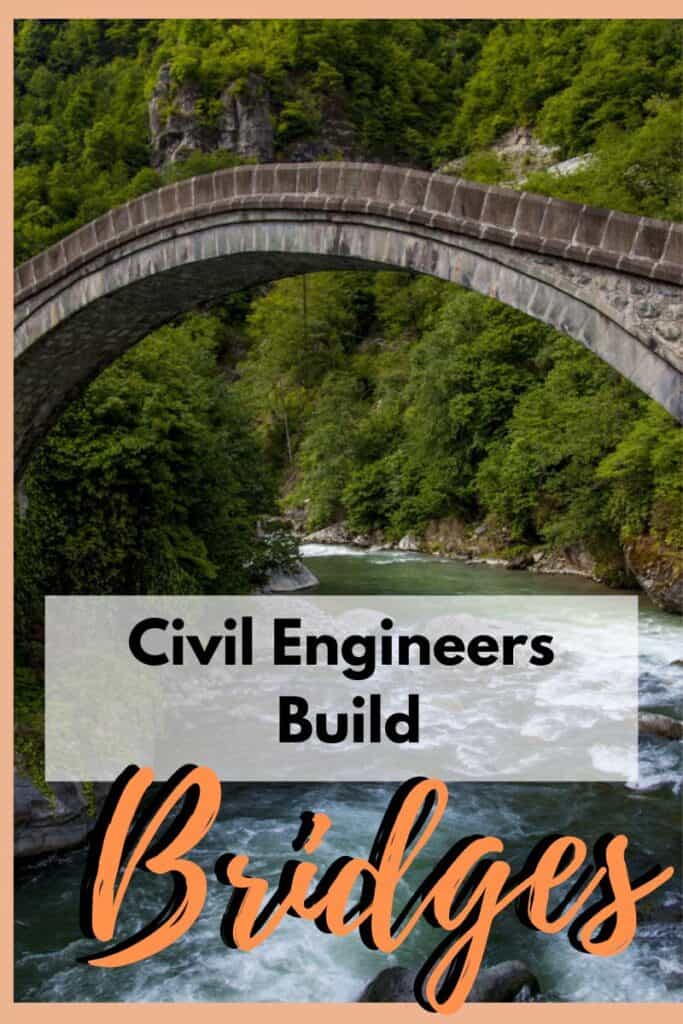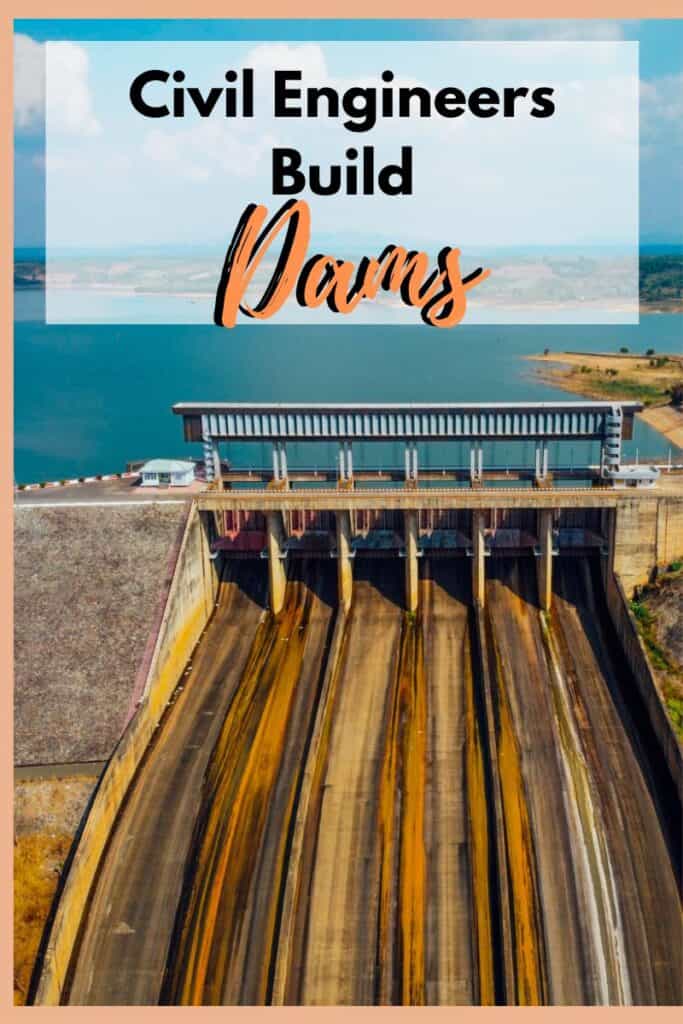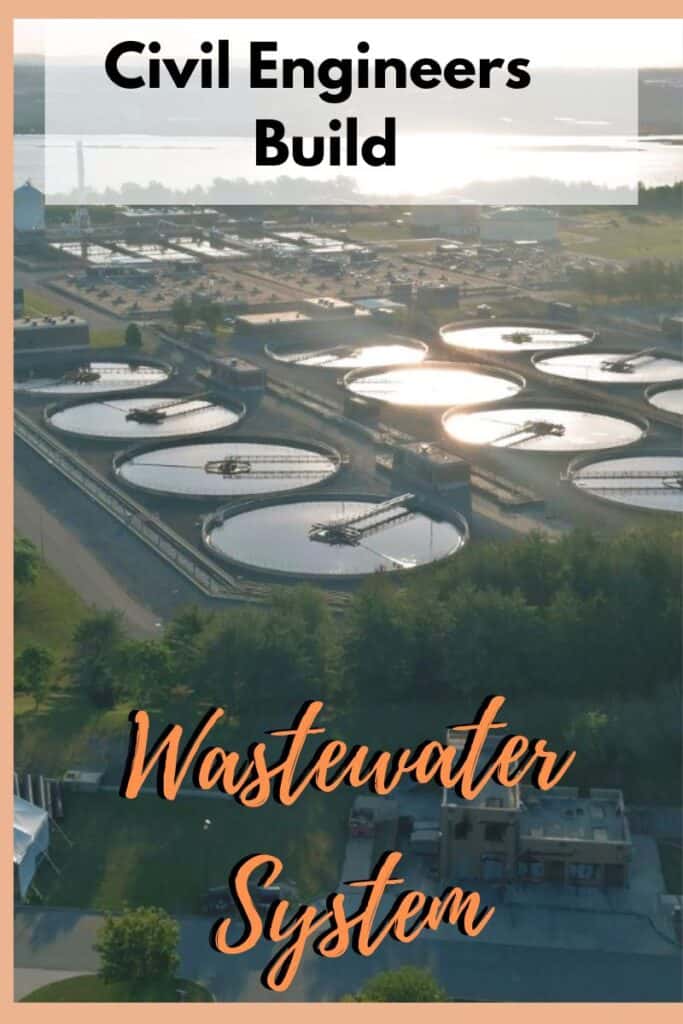Every time you drive on a freeway, enjoy running water or head to the airport to catch a flight, you’re benefiting on the work of civil engineers. Civil engineering is the practice of designing, building and maintaining vital infrastructure like roads, airports, dams, bridges and even sewer systems. Although you might not be familiar with the ins and outs of their job, their work is a part of your everyday life.
Civil engineering has been around for centuries: “Engineer” and “architect” used to be synonymous, up until the 19th It wasn’t until 1828 that the term “civil engineering” was used to describe building projects made by a non-military group. However, civil engineering has been around as long as we’ve been creating infrastructure.
Thanks to the work of civil engineers, we enjoy not just roads and railways, but rollercoasters, waterslides, spectacular buildings and bridges. Our world would be a lot less accessible—and a lot less fun—without them.
What’s the World Without Civil Engineers?
In a world without civil engineers, the built environment would be a very different place. Buildings would be shorter, roads would be narrower, and bridges would be less sturdy. In fact, many of the conveniences and comforts that we take for granted today would simply not exist.
Thankfully, we do have civil engineers to thank for the modern world as we know it. These dedicated professionals have made it their life’s work to design and build the infrastructure that we all rely on. From the tallest skyscrapers to the mightiest bridges, they have helped to create the world we live in today.
So the next time you’re enjoying the fruits of their labor, remember to thank a civil engineer. Without them, the world would be a very different place.
A world without civil engineers would be a very different place
A world without civil engineers would be a very different place. There would be no one to design and build the roads, bridges, and buildings that we rely on every day. There would be no one to maintain and improve our water and sewer systems. And there would be no one to protect us from the dangers of floods, landslides, and other natural disasters.
Without civil engineers, the world would be a much less safe and comfortable place to live in. So if you ever find yourself wondering what civil engineers do, just remember that they make the world a better place for all of us.
What civil engineers do
A civil engineer is a professional who applies their knowledge to the design, planning, construction and maintenance of infrastructure projects. This can include anything from bridges and roads to dams and water treatment plants. Civil engineers work in a variety of settings, including the public and private sectors.
The work of civil engineers is essential to the functioning of modern society. Without them, we would not have the infrastructure in place to support the population. This is why civil engineering is often referred to as the “backbone of society.”
How civil engineers have shaped the world
How would the world look without civil engineers? This is a question that is often asked by those who are not familiar with the profession. To put it simply, civil engineers are responsible for the design, construction, and maintenance of the infrastructure that makes modern life possible. This includes everything from bridges and roads to water treatment plants and sewer systems.
In other words, civil engineers are the unsung heroes of the modern world. They are the ones who make sure that the roads we drive on are safe, that the water we drink is clean, and that the buildings we live and work in are safe and up to code. Without them, the world would be a very different place.
So, the next time you see a civil engineer at work, be sure to give them a wave and a thank you. They are the ones who make our world a better place!
The impact of civil engineering on society
A civil engineer is responsible for the design, construction, and maintenance of the physical and naturally built environment, including public works such as roads, bridges, canals, dams, airports, sewerage systems, pipelines, and railways. Civil engineering is the oldest engineering discipline after military engineering, and it is defined to distinguish non-military engineering from military engineering.
It is a professional engineering discipline that deals with the design, construction, and maintenance of the physical and naturally built environment. Civil engineering is the oldest engineering discipline after military engineering, and it is defined to distinguish non-military engineering from military engineering.
The civil engineer is responsible for ensuring that the physical and naturally built environment can support the needs of society. They are involved in the design, construction, and maintenance of infrastructure such as roads, bridges, canals, dams, airports, sewerage systems, pipelines, and railways.
The civil engineer must have a strong understanding of both the natural and the built environment in order to be successful. They must be able to identify and solve problems that may arise in either environment.
The civil engineer has a significant impact on society. They are responsible for the design, construction, and maintenance of the physical and naturally built environment. Without civil engineers, society would not be able to function properly.
The future of civil engineering
The world without civil engineers is a scary thought. These are the professionals who design and construct the infrastructure that we all rely on every day. Without them, our cities would grind to a halt.
The good news is that civil engineering is a booming profession. The demand for qualified civil engineers is high and is expected to continue to grow in the coming years. This is due to the increasing population and the need for more and better infrastructure.
Civil engineers will be needed to design and build the infrastructure of the future. This will include everything from smart cities to space infrastructure. They will also need to find ways to reduce the impact of infrastructure on the environment.
The future of civil engineering is exciting and full of opportunity. It is a profession that is essential to the world and one that will continue to grow in importance.
Noteworthy Civil Engineering Structures and Practices
Homes
Homes not only protect from the elements, they also carry an emotional significance to their inhabitants. Academically agreed upon house construction dates back 400,000 years to a site in Nice, France called Terra Amata. This is one of the oldest sites where humans began constructing structures to protect themselves from the elements.
A lot can be determined about a group’s society based on their homes. Usually, round house construction denotes nomadic or semi-nomadic people while square houses most likely mean the society was stationary. The way homes are arranged also hints at the structure of social relationships. Even today, the way homes are built can be telling of society. They can show whether the people are more independent or value communal living, social statuses, economic inequalities, etc. They can even tell whether husbands had to sleep on couches when their wives were mad!
The inventor of the first home created more than just a structure. They created a way for a culture to express itself and influence the lives of all humans since.
A home is one of the most important investments a person can make in their life, and the role of a civil engineer in homebuilding is vitally important. Civil engineers are responsible for the design and construction of the foundation, framing, and infrastructure of a home.

The foundation of a home is arguably the most important part, as it is the first line of defense against water and weather damage. A well-designed and well-constructed foundation will keep a home safe and dry for many years. The framing of a home is also important, as it determines the layout, size, and ultimately the value of the home. A well-framed home is more durable and less likely to suffer from moisture damage.
The final product of a home is only as good as the infrastructure that supports it. Civil engineers design and construct the roads, sidewalks, and drainage systems that support a home. A well-designed and well-constructed infrastructure will ensure that a home is safe and accessible for years to come.
Civil engineers are responsible for the safety and well-being of homeowners across the country. By ensuring that the foundation, framing, and infrastructure of the home are well-designed and well-constructed, civil engineers play a vital role in homebuilding. Thanks to the hard work and dedication of civil engineers, homeowners can rest easy knowing that their home is built to last.
Bridges
A bridge isn’t just a complicated card game played by senior citizens. It’s also an engineered construct that offers a way to cross some kind of obstacle. It is believed that the first bridges to be used by early humans were as rudimentary as fallen logs or stepping stones to cross a stream. We’ve come a long way since then with various types of bridges ranging from the classic arch bridge to the suspension bridge, but the core concept has stayed the same: how to cross over an obstacle.

One of the most successful civilizations in building fast, strong, and inexpensive bridges were the Romans. They discovered the power of arches which helped redistribute the weight of the bridge and allowed them to hold extremely heavy loads. With the technology of roads helping rapidly expand the empire, Romans dispatched teams of engineers to build bridges in order to ensure they could quickly cross any obstacles in the terrain. Some of these bridges were built so well that they’re still in use today!
Modern bridges are made from combinations of modern materials such as steel supports and cables, concrete, and other compounds. With all the advancements in technology and design, they still carry the same principles that characterized ancient bridges.
Civil engineers play a vital role in the construction of bridges. They must design and oversee the construction of bridges that are both safe and efficient. In order to do this, they must have a deep understanding of the principles of civil engineering.
One of the most important aspects of designing a bridge is calculating the loads that it will need to support. This includes both the weight of the bridge itself and the weight of the vehicles that will cross it. Civil engineers must also take into account the effects of wind and weather on the bridge.
Another important consideration is the stability of the bridge. Civil engineers must ensure that the bridge will not collapse under the weight of the traffic crossing it. They also need to design the bridge in a way that minimizes the risk of accidents.
In addition to designing the bridge, civil engineers also play a role in its construction. They work with the contractors who will build the bridge to make sure that the construction process is carried out safely and efficiently.
Once the bridge is completed, civil engineers must continue to monitor it to ensure that it remains safe and functional. They must also make sure that any necessary repairs are carried out promptly.
Civil engineers are essential in the construction of bridges. Their knowledge and expertise allow them to design bridges that are both safe and efficient. They also play a key role in the construction process, and they are responsible for the ongoing maintenance of bridges once they are completed.
Drinking Water Systems
Water systems help capture, treat, and distribute fresh water for a variety of different uses. The two most prevalent types of water systems are well water and city water. City water is usually consolidated in some kind of large reservoir like a water tower or tank on a hilltop and distributed to inhabitants and businesses through the city’s pipe network. Well water can be private or part of a local water company for a community that isn’t connected to city water.
In order to make water potable, it needs to undergo treatment. There are four main types of water treatment systems: UV purification, reverse osmosis, distillation, and filtration. Each of these has its strengths and weaknesses, so a combination is usually most effective in providing the highest quality drinking water.

Private water filter systems are available at affordable prices at local hardware stores. The filters remove any unwanted or harmful items which may be present. Unfortunately, the stores don’t have anything for people with no filter during conversations.
Water is a precious resource and it is important for communities to have a reliable water pipe and system in order to have access to this resource. Civil engineers play a critical role in the construction of these systems. They are responsible for designing and overseeing the construction of the water pipe and system.
Civil engineers must take into account a variety of factors when designing a water pipe and system. They must consider the terrain of the area, the climate, the available resources, and the needs of the community. They must also ensure that the system is safe and reliable.
In order to ensure that the water pipe and system are reliable, civil engineers often use state-of-the-art technology and engineering methods. They also use careful planning and design.
Civil engineers are also responsible for maintaining the water pipe and system. They must ensure that the system is kept in good condition and that any problems are fixed quickly.
The work of civil engineers is essential for ensuring that communities have access to safe and reliable water. Thanks to their hard work, many communities are able to enjoy the benefits of a reliable water pipe and system.
Roads
This seems like a given, but roads are a critical part for the development of any society. The Romans were previously mentioned in the bridge section, but they need recognition for their road network as well. Roads were the technology that allowed them to expand and maintain the empire as well as they did by simply having a clear path for the army to travel on. Before roads there was a much higher chance of walking face first into trees.

Today, roads are a critical part for all people who commute to work, supply chain transportation, and skateboarders showing off their sick new tricks. They are the primary infrastructure used for logistics to which most ground-based vehicles have been designed around. In fact, we are so dependent on roads, that if all the roads in the US alone were straightened out one after the other they would circle the earth 150 times!
Civil engineers play a crucial role in the construction of safe roads. They design roadways and bridges that can withstand the weight of traffic and weather conditions. They also work with other engineers and contractors to ensure that roads are built to meet safety standards.
One of the main responsibilities of a civil engineer is to design roadways. They must take into account the weight of traffic that will be using the road, as well as the weather conditions. They must also make sure that the road is wide enough to accommodate vehicles, and that the surface is smooth and level.
In addition to designing roads and bridges, civil engineers also work with other engineers and contractors to ensure that roads are built to meet safety standards. They work with traffic engineers to make sure that the roads are designed to accommodate traffic, and with construction, engineers to make sure that the roads are built properly. They also work with safety engineers to make sure that the roads are safe to use.
Civil engineers play a crucial role in the construction of safe roads. They design roadways and bridges that can withstand the weight of traffic and weather conditions. They also work with other engineers and contractors to ensure that roads are built to meet safety standards.
Hydroelectric Dams
Dams are a vital part for water collection, retention, river flow control, and to regulate flooding. They are also necessary to create hydroelectric power using the pressure of the accumulated water. Dams are also known as impoundment hydroelectric facilities because they hold the water behind a barrier, not because your towed car is stored there.

Hydroelectric dams can range in size, with one the largest plant located in China on the Yangtze River. It’s over six hundred feet high and over 1.4 miles wide! Dam that’s big! Despite the size of this dam, the Itaupa plant on the Parana River between Brazil and Paraguay generates the most electricity.
With a constant stream of water to power them, hydroelectric dams are a great way to harness electricity in a way that’s better for the environment than fossil fuels. In fact, 16% of the electricity generated worldwide came from hydroelectric sources!
Civil engineers play a critical role in the design and construction of dams. They must ensure that the dam is safe and meets all the necessary requirements. This includes designing the dam and the spillways, ensuring the right materials are used, and monitoring the construction process.
The most important responsibility of a civil engineer is ensuring the safety of the dam. They must design the dam and spillways to withstand the force of the water, as well as earthquakes and other natural disasters. They must also ensure that the dam is able to handle the amount of water that will be held back.
Civil engineers must also consider the environment when designing a dam. They must make sure that the dam does not disturb the local ecosystem and that the water is released in a way that does not harm the environment.
Dam construction is a complex process that must be monitored carefully. Civil engineers are responsible for overseeing the construction and making sure that all the necessary safety precautions are taken. They must also make sure that the dam is properly aligned and that the correct materials are used.
Dam construction is a challenging but rewarding career. Civil engineers have the important responsibility of ensuring the safety of the public and the environment. They play a critical role in the design and construction of dams, and their work is essential to ensuring that these structures are safe and functional.
Wastewater Treatment Systems
Treating human waste has been a problem needing solving since humans began congregating and settling in numbers. Even today, water has to go through a whole process to clean out the waste before it’s safe to be recirculated back into the supply. With growing population and city expansion, waste water continues to be a challenge to maintain. For reference, California alone produces about four billion gallons of wastewater per day. That’s a crap ton (pun intended)!

Not only is this process a step towards sustainability, it is also one of the most cost effective ways to treat water for it to become potable. For example, desalination of ocean water is twice as expensive as a water treatment method.
Civil engineers are responsible for the design and construction of wastewater systems. They must take into account the topography of the area, the climate, and the needs of the community. In designing a wastewater system, civil engineers must also consider the environmental impact of the system.
Civil engineers often work on wastewater projects in conjunction with environmental engineers. Environmental engineers are responsible for ensuring that the wastewater system meets all environmental regulations. They also work to minimize the environmental impact of the system.
In many cases, wastewater systems are constructed by a contractor. The contractor must work closely with the civil engineer to ensure that the system is designed and constructed properly.
A wastewater system must be able to handle the wastewater from the community it serves. The wastewater may include wastewater from homes, businesses, and industries. It must also be able to handle stormwater.
Stormwater is water that accumulates during a storm. It can include water from the street, from roofs, and from other sources. Stormwater can cause problems if it is not handled properly. A wastewater system must be designed to handle both the regular flow of wastewater and the increased flow caused by a storm.
Civil engineers are essential in the design and construction of wastewater systems. They play a key role in ensuring that the system is safe and efficient. Without them, the wastewater system would not be able to function properly.
Shorelines
Despite sounding like a rap group, a riprap is actually a cluster of rocks or other material used on banks that are exposed to running water to prevent erosion. Ripraps can be used along a lake shore, along the outer end of a bend in a river, or to support structures built in or around bodies of water such as a bridge.

Riprap gets its name from the nautical phrase rip-rap, meaning a “stretch of rippling water, often caused by underwater elevations.” It was used to describe naturally occurring ripples in water, but with the intentional placement of the loose rocks to fight erosion in shallow waters, the name was most likely adopted into widespread use in civil engineering.
Civil engineers are responsible for the design and construction of shorelines all over the world. Their expertise is critical to ensuring that our coastlines are safe and able to withstand the forces of nature.
Shorelines are essential for protecting coastal communities from storms and flooding. They also play an important role in the economy, providing a gateway for trade and commerce. In order to ensure that our shorelines are effective, civil engineers must carefully consider a variety of factors.
One of the most important considerations is the soil and rock conditions at the site. Civil engineers must select the right type of soil and rock to support the weight of the structure. They must also account for the potential for erosion and the effects of weather and climate change.
Another important factor is the layout of the shoreline. Civil engineers must carefully plan the placement of structures, such as piers and breakwaters, to protect the coastline from damage.
In order to ensure that our shorelines are safe and effective, civil engineers must have a knowledge of a variety of disciplines, including geology, hydraulics, and coastal engineering. By working together, they can create a shoreline that is both beautiful and functional.
Sustainable Construction Practices
The construction industry is one of the leading industries that contribute to landfills and the consumption of resources. This doesn’t mean that we should all run into the forest and build a community living in tree houses. Sustainable construction practices aim to reduce the environmental impact of the industry through methods such as reduced energy consumption, using renewable and recyclable materials and reducing toxic waste (no we don’t mean your ex).

Some benefits of sustainable construction practices include: waste reduction, helps with the economy, encouraging efficiency in project management and material usage, reducing the industry’s carbon footprint, and could reduce material costs if they had widespread application.
Sustainability is the capacity to endure. It is the ability to maintain a certain course or state over a long period of time. And it is this very quality that underpins sustainable construction practices.
There are three primary dimensions to sustainability in construction: environmental, economic and social. All three are important, and all three need to be considered when designing and constructing a building or infrastructure.
Environmental sustainability is about using resources in a way that does not compromise the environment now or in the future. This means using materials and construction methods that do not damage or pollute the air, water or soil. It also means designing and building structures that use energy and water efficiently.
Economic sustainability is about creating structures that are affordable and practical to operate and maintain. This means using materials and construction methods that are affordable and using energy and water efficiently. It also means designing and building structures that can be adapted and upgraded as needs change.
Social sustainability is about creating structures that are safe and healthy to live and work in. This means using materials and construction methods that do not release harmful toxins into the air, water or soil. It also means designing and building structures that are accessible and comfortable for everyone, regardless of age or ability.
Sustainable construction practices are important because they help to protect our environment, our economy and our social wellbeing. By using resources efficiently and creating safe and healthy structures, we can reduce our impact on the planet, save money and make our communities more inclusive and equitable.
Conclusion
Civil engineering has contributed greatly to the advancement of society and the conveniences we enjoy today. By maintaining, developing, and upgrading the facilities and services used by the public, people can enjoy quick routes to their destinations (except during rush hour), running water in their homes, removal of waste from their houses, and more!
Without this type of careful planning and extensive trial and error throughout human history, none of our modern-day conveniences would be possible. Imagine trying to cross the Amazon River without a bridge! Or having to dig a hole in your backyard to do your business. It’s all a testament to the benefits and ingenuity of civil engineering.
